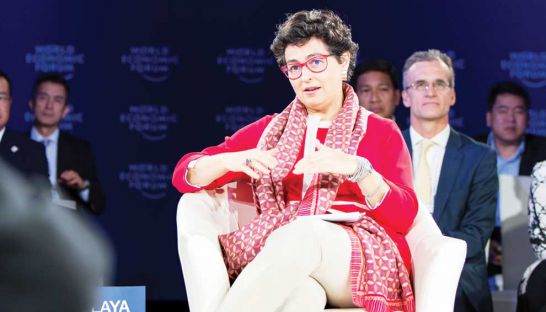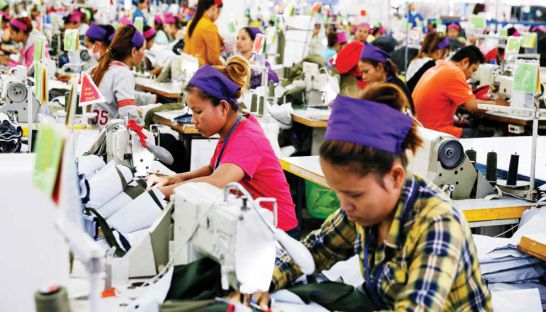Trade to level the playing field
Trade to level the playing field
Cambodia and Asean occupy an increasingly important location at the crossroads of global trade routes. The Post’s Matthieu de Gaudemar spoke with Arancha González, executive director of the International Trade Center, on the sidelines of the recent World Economic Forum on Asean summit to discuss global trade uncertainty and its impact on the region.

With the Trans-Pacific Partnership (TPP) faltering after the US election, what should we make of the Regional Comprehensive Economic Partnership (RCEP) pushed by China, which also includes Cambodia?
RCEP is a bit different from the TPP because it is a bit shallower in terms of regulation, and with more members. RCEP is now the game in town, at least for a country like Cambodia, so I understand that Cambodia would want to make an investment in RCEP. It is also a very interesting mix of members with developed economies like Japan, Korea, China or India, with Australia, as well as Asean.
Should the world be worried about a Chinese-led trade environment?
I think the world should look to strengthen multilateral trade and should look to have common trade rules that are applicable to all countries. Why is this important? Because opening trade is about levelling the playing field and the most efficient way to level the playing field is to do it at the global level. The beauty of this global level is that it is pretty democratic as every country has one vote and decisions are taken by consensus. So the best antidote against one or two players being the big rule makers at the expense of others is to have more multilateral trade engagement.
Cambodian exports go mostly to Europe or the US. Should the country look to diversify its trade regionally?
I do think that Cambodia’s challenge trade-wise is to diversify. First, it needs to diversify its products, because at the moment it is too reliant on just a couple of export items. It also needs to diversify from products into services, like tourism, and to diversify in terms of trading partners. Cambodia is a very specific member of Asean in that only one-fifth of its exports are going to other Asean countries.
I think this diversification should be at the heart of a more competitive trade approach by Cambodia. But diversification needs to be planned and one needs to look at comparative advantages and build on those. One problem in general of the Asean region is lower productivity than say China. In the case of Cambodia, yes wages are lower, but productivity is also much lower, so the differential in wages can be eroded very fast unless one invests in productivity.
What barriers exist right now for greater inter-Asean trade?
Asean has come a long way in terms of trade opening and it has done a very good job in terms of tariffs. Tariffs have been massively reduced between Asean members. Today, tariffs are in the order of 1 or 2 percent. That is very low. But Asean still has a long way to go in terms of nontariff barriers. The invisible obstacles to trade like regulations, customs procedures and certification requirements are the major obstacles to trade in this region.
The impact of nontariff barriers can reach up to 30 percent of the cost of the trade. Investing in removing these nontariff barriers is what would make this Asean market function better, grow faster.
What role do SMEs have in trade?
SMEs are basically 90 percent or more of businesses in any of the Asean countries. They are the bulk of businesses, but they are very sensitive to costs, so with nontariff barriers in the order of 20 to 35 percent, SMEs will not be able to do trade. What we see in this region is that the country that is the best performing in terms of SME exports only has 30 percent of its SMEs exporting, so there is a long way to go.














